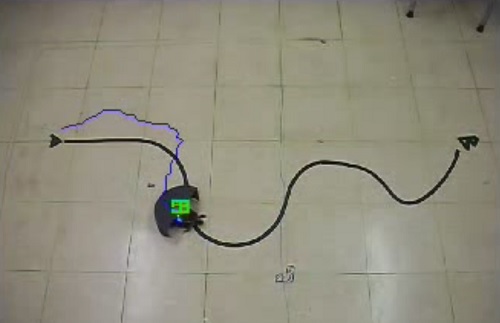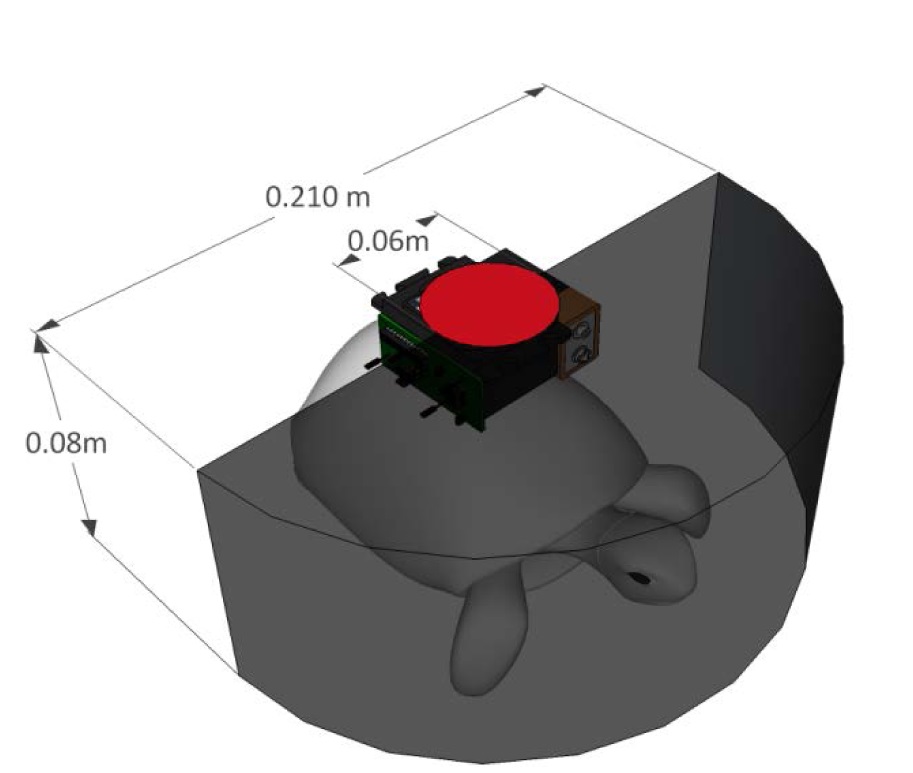Live Turtle Bot Maneuvered With Remote Control

Instead of making a robot from scratch, why not start with a turtle? With a simple, non-invasive device attached to its shell, a live red-eared slider could be steered like a remote-controlled toy car — a slow one at least, new research shows.
While some robot-makers have drawn inspiration from the animal kingdom, others have quite literally used animals as starter kits, exploiting their natural intelligence and mechanics that have taken millions of years to evolve. Engineers have previously created part-robot insects like cockroaches, moths, beetles with electrical implants that poke at the critters' neural circuits or muscles to control them. There were even murmurings a few years ago about military researchers being interested in making a cyborg shark with neural implants to remotely manipulate its brain signals.
But the new study on turtles took a less invasive approach. The team of researchers from the Korea Advanced Institute of Science and Technology (KAIST) showed they could direct a turtle's voluntary movements with a remote-controlled prosthetic that would simulate objects in its way. [See Video of the Remote-Controlled Turtle]

"These experiments demonstrate that animal behavior can effectively be guided by evoking instinctive behavior essential for survival," the researchers wrote in an article detailed online April 17 in the journal PLOS ONE.
One key aspect of an animal's survival is dodging obstacles. The researchers studied how four lab-raised red-eared sliders maneuvered around roadblocks and used that information in building the prosthetic. The attachment looks like a large black half-cylinder attached to the turtle's back that can swing around to block or partially block the animal's vision by remote control. Though unwieldy, the device was effective in lab experiments; by adjusting the direction and degree of the shield's coverage, the researchers could steer the turtles along a set path.
The simple concept behind this approach could be applied to guide other animals in other environments, the researchers say.
"In future works, we will study controlled behavior in more detail and also apply this framework to other animals that have excellent vision," the team wrote. "Hawks, cats, lizards and carp are good candidates. They are also big and strong enough to carry larger devices. Through our ongoing research, we already found that the same framework can be employed to control fish."
Sign up for the Live Science daily newsletter now
Get the world’s most fascinating discoveries delivered straight to your inbox.
Movement-controlling devices could help scientists spy on rarely seen animal habitats and social interactions, building on something researchers already use: crittercams. By outfitting wild animals with critter cams, scientists have been able to learn more about the hunting techniques of the elusive Humboldt squid, the secrets of penguin diving, and the feeding habits of blue whales.
Animals enhanced with robot parts also could be recruited for tasks that aren't so easy for humans, such as exploring the deep seas or surveying a disaster zone. But we might be a long way from seeing cyborg turtles or hawkbots put to work. The South Korean team says its final goal of building a device that's ready for the real world comes with a host of challenges — among them, miniaturizing and waterproofing the animal attachment, as well as equipping it with viable telecommunication and navigation capabilities.
Follow Megan Gannon on Twitter and Google+. Follow us @livescience, Facebook & Google+. Original article on LiveScience.com.










